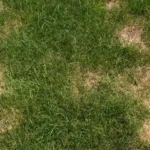Everything is bigger in Texas, as the saying goes, including our weather. When we have what I call Biblical type weather, think 109 degree heat followed by days with several inches of rain, it is usually following by a Biblical type ‘plague’. A few years back it was grasshoppers, another crickets, and this year has been more chinch bugs than I’ve seen in a long time followed by an epic march of armyworms invading North Texas.
For the record, in nearly forty years in the lawn and landscape business I have never seen an armyworm. In fact, I was talking with our commercial fertilizer supplier who has been around nearly as long, and says he usually only sees one or two yards each year that have armyworms.
He went on to tell me that last week he received a few calls about armyworms, but this week he’s receiving a call an hour about the invaders. It is so bad that some areas are seeing their lawns, streets, and sidewalks covered in them (if that’s not a plague, I don’t know what is!).
So, what caused them and what do all these armyworms do to lawns? Armyworms love late summer rains, which we’ve had plenty of this year. They cause short term damage to lawns and landscapes by chewing the leaves off of the plants. Armyworms don’t like St. Augustine but if they are in a bermuda lawn, they can leave it looking like it was scalped by a lawnmower on the lowest setting in a matter of days.
The good news is your grass isn’t dead, just cut back, and it will grow back eventually. It may look bad for some time and the armyworms are very creepy, but there’s really no long term damage being done.
The treatment for armyworms is to spray an insecticide such as Bifenthrin or just wait for them to pass. They typically move on pretty quickly, and the promised cold front next week should give them ample motivation to march out of North Texas.
If you see armyworms in your lawn or landscape and don’t want to DIY give us a call at 972-495-6990 or email [email protected].



